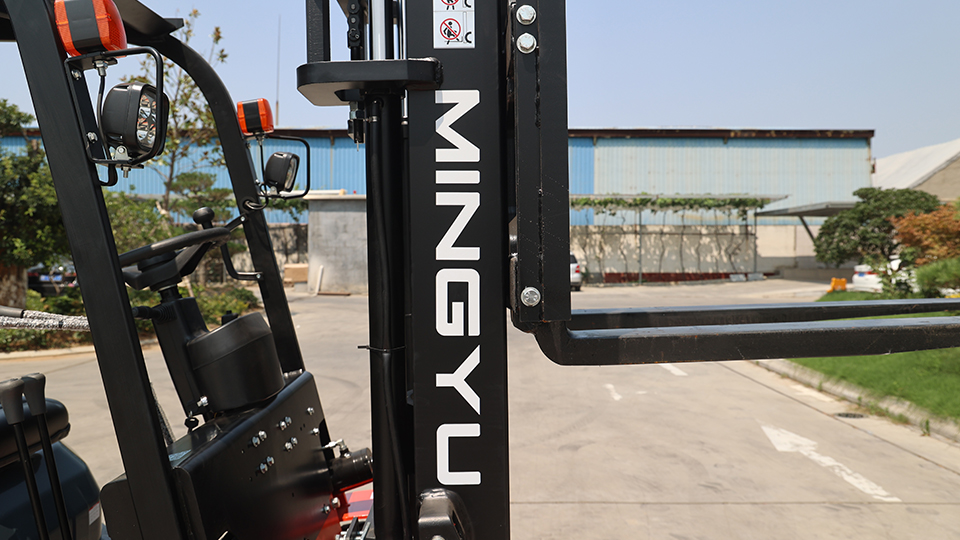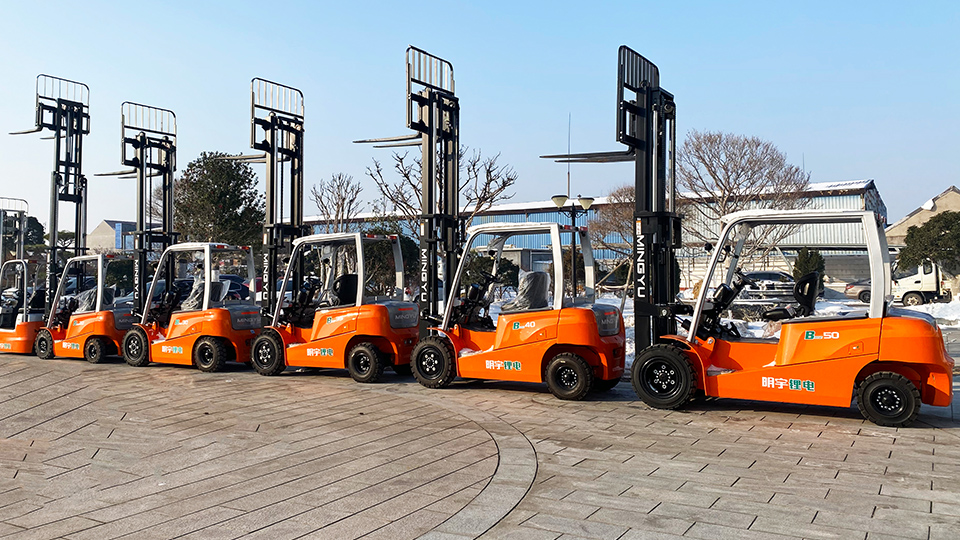
Abstract
Forklifts are the workhorses of countless industries, their functionality predicated on a robust and reliable hydraulic system. The hydraulic lift hose, a critical component of this system, is responsible for transmitting pressurized fluid to raise and lower the forks. A common question among maintenance technicians and operators is whether it is necessary to "bleed" a hydraulic lift hose. This technical article provides a comprehensive exploration of this topic, delving into the principles of hydraulic fluid dynamics, the consequences of trapped air, and the specific procedures for bleeding forklift hydraulic systems. We will demonstrate that while a complete and proactive bleeding procedure is not always mandatory for a simple hose replacement, it is a critical step for maintaining system efficiency, safety, and longevity, especially after major component replacements or system overhauls. We will also discuss the different types of bleeding procedures, the tools required, and the best practices to ensure a fully functional and safe forklift operation.
1. Introduction to Forklift Hydraulic Systems
A forklift's lifting mechanism is a marvel of hydraulic engineering. It operates on Pascal's Law, which states that pressure exerted anywhere in a confined incompressible fluid is transmitted equally in all directions throughout the fluid. In a forklift, this principle is applied to a hydraulic system comprising a pump, a reservoir, control valves, cylinders, and a network of hoses and pipes. The pump draws hydraulic fluid from the reservoir and pressurizes it. This pressurized fluid is then directed by the control valves to the lift cylinders. The pressure of the fluid acts on the cylinder's piston, forcing it to move and thereby lifting the forks. The hoses, particularly the lift hoses, are the flexible conduits that transport this high-pressure fluid. Their integrity and proper function are paramount to the forklift's performance.
2. The Incompressible Nature of Hydraulic Fluid vs. The Compressibility of Air
To understand why bleeding is a concern, one must first grasp the fundamental difference between hydraulic fluid and air. Hydraulic fluid, typically a specialized oil, is virtually incompressible. This property is what allows it to efficiently transmit force. A small change in the volume of the fluid results in a massive change in pressure, which is exactly what a hydraulic system needs to lift heavy loads.
Air, on the other hand, is a highly compressible gas. A significant change in pressure is required to produce a small change in its volume. When air gets trapped in a hydraulic system, it behaves like a spring. Instead of the force from the pump being directly transmitted to the cylinder's piston, some of that force is expended on compressing the trapped air. This leads to a "spongy" or "mushy" feel in the controls, a delayed response in the lifting mechanism, and a significant loss of lifting power

3. The Problem of Trapped Air: Why Bleeding is Essential
Trapped air, also known as aeration, can manifest in a forklift's hydraulic system in several ways:
During Component Replacement: Whenever a hydraulic hose, cylinder, or control valve is replaced, air inevitably enters the system. This is the most common scenario that necessitates a bleeding procedure.
Fluid Level Issues: If the hydraulic fluid level in the reservoir drops too low, the pump can cavitate, drawing in air along with the fluid.
Leaks: Leaks in the suction side of the pump can draw in air, even if no fluid is visibly leaking.
High Temperatures: Extremely high operating temperatures can cause the fluid to break down and release dissolved gases, including air.
The consequences of trapped air are not merely an inconvenience; they can be a serious safety and operational hazard:
Reduced Lifting Capacity: The spongy feel from compressed air reduces the system's ability to lift its rated load. The operator might try to compensate by over-revving the engine, leading to unnecessary wear and tear.
Unstable and Erratic Movement: The forklift's forks may not lift smoothly or consistently. They might "jump" or "jerk," which can be a safety risk, especially when handling fragile or unbalanced loads.
Component Damage: The process of a hydraulic system trying to compress and release trapped air can cause a phenomenon called "dieseling," where the rapid compression of air causes localized hot spots. This can damage seals and hoses, leading to premature failure. Furthermore, the shock and vibration caused by erratic movement can put undue stress on all hydraulic components, including the pump and cylinders
Cavitation: The presence of air can lead to cavitation, a process where air bubbles form and then collapse violently under pressure. This can cause significant erosion and pitting on pump impellers and cylinder walls, drastically shortening their lifespan.
4. The Technical Answer: Is Bleeding a Forklift Hydraulic Lift Hose Necessary?
The direct answer to the question "do you have to bleed a forklift hydraulic lift hose?" is nuanced. While a complete, formal bleeding procedure isn't always a required step after a simple, single hose replacement, it is considered a best practice and is often automatically accomplished by the system's design.
Here’s a breakdown of why and when it is necessary:
Simple Hose Replacement: When replacing a single lift hose, a small amount of air will enter the system. However, in many modern forklift designs, the hydraulic system is "self-bleeding" to a certain extent. As the forks are cycled up and down a few times, the pressurized fluid will naturally push the trapped air bubbles to the highest point in the system, where they are often routed back to the reservoir.
Major Component Replacement: If you are replacing a major component like a lift cylinder, control valve, or the main hydraulic pump, the amount of air introduced into the system will be substantial. In these cases, a formal, methodical bleeding procedure is absolutely essential. Failure to do so will result in the severe operational issues outlined in the previous section.
New Forklift or System Rebuild: After a complete system rebuild or when commissioning a brand-new forklift, a thorough bleeding procedure is non-negotiable. This ensures that the system starts its life with maximum efficiency and longevity.
5. The Bleeding Procedure: A Step-by-Step Technical Guide
Bleeding a forklift's hydraulic system is a straightforward process, but it must be performed with care and attention to safety. The exact steps may vary slightly depending on the forklift's make and model, so it is always crucial to consult the manufacturer's service manual. However, the general principles remain the same.
Safety First:
Wear appropriate personal protective equipment (PPE), including safety glasses and gloves.
Ensure the forklift is on a level surface with the key turned off and the parking brake engaged.
Lower the forks completely to the ground.
Be aware of high-pressure fluid. Even a small pinhole leak can inject fluid into the skin, which is a severe medical emergency.

Procedure:
Check the Reservoir: Before starting, check the hydraulic fluid level in the reservoir. Ensure it is at the correct level, as specified by the manufacturer. If it is low, top it off with the correct type of hydraulic fluid. Using the wrong fluid can damage the seals and other components.
Raise the Forks: Start the forklift and slowly raise the forks to their maximum height. This will push some of the air to the top of the cylinders. You may notice some erratic movement or a "spongy" feel.
Lower the Forks Slowly: Slowly lower the forks all the way down. This pushes the fluid and any trapped air back through the system.
Tilt and Cycle: Raise the forks a few inches off the ground and cycle the tilt cylinder (tilting the mast forward and backward) a few times. This helps to work any air out of the tilt circuit.
Side Shift and Other Functions: If the forklift is equipped with a side-shift or other auxiliary hydraulic functions, operate these controls back and forth several times to bleed any air from those circuits.
Recheck the Reservoir: After cycling all functions, turn the forklift off and check the hydraulic fluid level in the reservoir again. The level may have dropped as the air was purged and replaced with fluid. If it is low, add more fluid to the correct level.
Repeat as Necessary: Repeat the entire process (steps 2-6) a few more times until the lifting, tilting, and other hydraulic functions operate smoothly and consistently without any hesitation or erratic movement. The spongy feel should be gone.
Final Inspection: Once the system is operating correctly, check all connections and hoses for any signs of leaks.
6. Automated Bleeding and Design Considerations
Many modern forklifts are designed with features that help to minimize the need for a manual bleed. The placement of the reservoir, pump, and control valves is often optimized to allow air to naturally rise and return to the reservoir. Additionally, some systems may incorporate "de-aeration" filters or chambers within the reservoir to help separate air from the fluid. While these designs are effective, they are not a substitute for a manual bleed after a major system overhaul or when problems persist.
7. Conclusion
The question of whether to bleed a forklift hydraulic lift hose is more than a simple yes or no. While a quick hose replacement may not always demand a formal bleeding procedure due to the self-purging nature of some systems, understanding the principles of hydraulics makes it clear that air in the system is a significant detriment. After any major component replacement, or if the system exhibits signs of aeration—such as spongy controls, erratic movement, or reduced lifting capacity—a methodical bleeding procedure is not just a recommendation; it is a technical necessity. This procedure is crucial for restoring the system's efficiency, ensuring safe and predictable operation, and extending the lifespan of expensive hydraulic components. By adhering to proper maintenance protocols and understanding the critical role of air-free hydraulic fluid, operators and technicians can ensure their forklifts remain reliable, safe, and productive assets for their businesses.
Name: selena
Mobile:+86-13176910558
Tel:+86-0535-2090977
Whatsapp:8613181602336
Email:vip@mingyuforklift.com
Add:Xiaqiu Town, Laizhou, Yantai City, Shandong Province, China